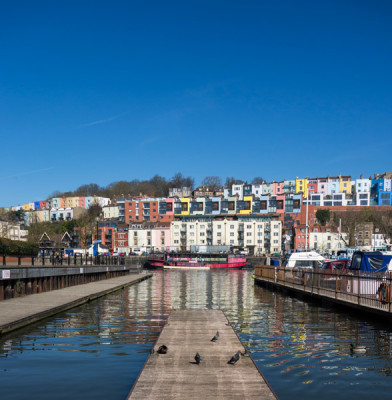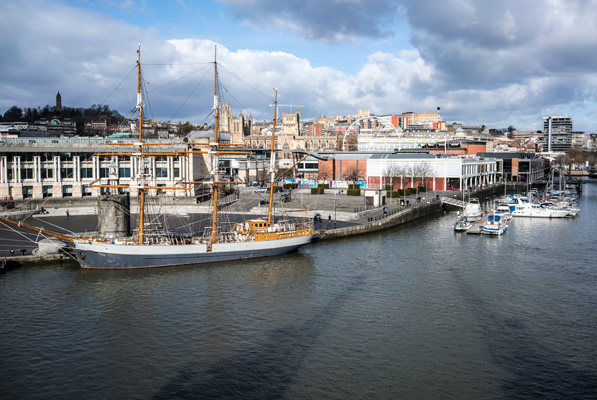Scroll down for previous photography blog posts. For latest posts please click here: Latest Blog Posts
19/04/2017
What A Difference The Printer Paper Makes
I recently had a very pleasant surprise when I decided it would be interesting to use high end papers on a modest all-in-one A4 printer to see what it might be capable of under the ‘right circumstances’. After purchasing some A4 Matt Fine Art paper from the Hahnemuhle range, I used it to make prints via the Brother inkjet printer I have had for general business purposes for several years.
The colours were an excellent match for those on the original digital image and the uplift in quality over standard papers was, I thought, quite remarkable – to the extent that I took the first print out (on Albrecht Durer, 210gsm) straight down to my favourite framers to be mounted.
I’m under no illusions that this set-up could ever replace the services of professional printers with high end nine colour machines and the ability to output large prints of superb quality. As I am unlikely to invest in a specialist and expensive image printer any time soon, the professionals will remain my first port of call 99 per cent of the time. However, I will now be keeping a small supply of these papers to hand for those occasions when I am looking to output a print primarily for personal use.
Readers of this blog may well be familiar with these papers and, indeed, I have a fair idea of what they can achieve on top notch machines, so do forgive my excitement – but I confess to being rather blown away by what emerged from an old home printer that was very modestly priced when purchased.
A big thankyou to Hahnemuhle.
mf image
10/04/2017
Why Is This One Of Bristol’s Most Photographed Views?

When I returned to photography in a meaningful way, and picked up a Sony RX100 as my carry everywhere camera, this is one of the first images I captured. I think it’s a wonderful vista but I have recently removed it from the architecture gallery on my website. That’s not because I have grown tired of the view but because it’s a sight that evidently captures the imagination of pretty much everyone toting some form of camera. As I try (not always successfully) to focus on the city’s slightly less familiar attributes, it had to go.
What is it about this view that so attracts people? I don’t think it is hard to pin this down. The houses across the harbour capture the vibrant colour that abounds in Bristol and the topography highlights the city’s ‘hilly’ character. Over the years, The Grain Barge – moored on the far side of the harbour – has become a familiar Bristol fixture. The Floating Harbour itself is central to the city’s character. Meanwhile the slipway and jetty in the foreground provide leading lines to direct the viewer in to the image.
It all adds up to a picture with appealing composition that succinctly tells an important part of the Bristol story.
Look on line, or in Bristol print media, and the chances are you’ll find numerous versions of this image. I’m betting hundreds, probably thousands, more will be created in the coming months and years – and why not? There’s a lot about Bristol to celebrate in this single frame.
mfimage
31/03/2017
Are In Camera Apps Cheating?
The advent of more sophisticated in camera photo apps raises an interesting question. Is this cheating?
For example, hitherto creating focus stacks has meant using a rock solid tripod and making minor adjustments to focus to obtain maximum front to back sharpness in an image. The less the depth of field, the greater the number of individual exposures that may be needed to achieve the required end result.
Similarly, landscapes that have to cater for ground level shadows and a much brighter sky will often either call for separate images to be merged in post or to be taken with the benefit of a graduated neutral density filter.
Today there are digital apps (e.g. those offered by Sony PlayMemories) that, at least to an extent, can replace these physical filters and painstaking image duplication, potentially saving on gear, time and ‘hassle’.
To my mind, this is not cheating but simply another step in the evolution of photographic technology. I think it would be wrong, certainly at present, to suggest they can completely replace the manual alternatives. However, it is hard to argue that they are any more cheating than the move from analogue to digital photography, the introduction of autofocus or the incorporation of the many digital settings that are the common features of today’s cameras.
How these tools are used is, perhaps, more significant. Just as learning the basics of photography with a film camera provides an excellent grounding for a move into digital, so understanding and using tools, such as filters, and techniques, such as focus stacking, offers a sound basis for using their digital successors – and appreciating both their benefits and restrictions.
mfimage
20/03/2017
Bristol’s Best Photo Location?
Bristol boasts many superb locations for photography. They include the Clifton Suspension Bridge, the Downs, the Cabot Tower and the Floating Harbour.
One of the best, particularly for visitors hoping to capture the essence of the city in a single shot, may not come instantly to mind for those unfamiliar with the area. Indeed, it’s not hard to visit its location and walk straight past it.
Museum fans may well have M Shed on their itinerary and call in to check out permanent or visiting exhibits but neglect to walk out onto the venue’s terrace. Whatever the weather, the walk up the stairs and the few additional steps to access the views of the city centre and Harbour are well worth it.
The elevation is not great but sufficient to allow superb panoramas and bring the workings of the city’s iconic cranes to eye level. Go through the doors and look straight ahead to the centre or turn left and walk to the end of the terrace to stretch the eye along the Floating Harbour and out towards the Cumberland Basin.
Bristol city centre and Floating Harbour viewed from the M Shed terrace.
mfimage
13/03/2017
Don’t Bin That Photo Session – Yet!
Do you encounter those occasions when you return from a photo shoot for a personal project, transfer the images to the computer and want to reject the lot? The light wasn’t what you had hoped for, the composition that seemed so good in your imagination didn’t quite work, moving elements in the image introduced blur that really was not intended.
The temptation is to press the delete button and move on. Don’t do it. At least until you have given those images the overnight test.
Once the images are in Lightroom, moving a few sliders will quickly reveal whether some of them can be rescued. On a first session, they may still look like no hopers. Keep resisting the urge to hit ‘Delete’. Step back for a while, leave it for another session on another day. In the meantime, why not give some background thought to one or two of the photographs and consider whether different levels/styles of post-processing could move them from the Junk folder to the ‘Keepers’ file.
Chances are there will be an image or two that ultimately can make the grade, with a little added imagination.
As for the rest, well maybe it is a good idea to bin them, otherwise the bill for an ever bigger hard drive(s) might get a little out of hand.
mfimage
01/03/2017
Why Being A ‘Photographer’ Is Meaningless
I recently read a piece by Chase Jarvis (if you don’t follow him you might like to take a look – http://www.chasejarvis.com) on the subject of when aspiring image makers should start describing themselves as ‘photographers’. The underlying message was essentially be confident in your ability and tell the world. If you don’t believe you are a photographer, then why should anyone else.
To a tribe notoriously uncertain about personal skills, this must be sound advice. There is, however, a caveat. I’m not sure just claiming to be a photographer actually means that much these days.
As is often stated, we are all photographers. The advent of the smart ‘phone has made sure of that. Millions of pictures are created and shared every day on websites and pretty much any social medium you might care to think of.
It may, therefore, be better to consider what TYPE of photographer you are. I have certainly been giving some thought to this.
You can take quick pictures for fun and to share with friends – you like taking pictures.
You can be an exceptionally talented and skilled photographer but have no interest in earning money from your images – I think this makes you an ‘expert photographer’. (‘Amateur’ is underselling your ability.)
Maybe some of you images are available through stock libraries but you aren’t interested in receiving specific commissions – so you are a ‘stock photographer’.
You earn your living as a photographer – so you are a professional.
I think, however, there is a problem with the idea of just being an ‘amateur’ or a ‘professional’. There are many who describe themselves as amateurs who are better than some professionals and many professionals who are streets ahead of amateurs. I reckon ‘amateur’ just means it’s not how you earn your living.
What is needed, perhaps, is more accurate definitions (which do already exist). When you add another descriptor in front of ‘photographer’ the words ‘amateur’ and ‘professional’ are arguably less necessary. ‘Fashion photographer’, ‘travel photographer’, ‘commercial photographer’, ‘fine art photographer’ etc. all imply at least a level of competence/professionalism.
Bearing this in mind, if we are inclined to modesty, rather than deciding to position ourselves in ‘black and white’ as amateur photographers or professionals, shouldn’t we use descriptions that tell the world the type of photographers we are? Doesn’t that then make it easier to say it with confidence – wherever we may be on our respective photographic journeys?
mfimage
